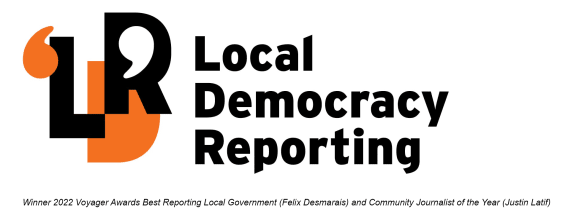
An artist's impression of the south Canterbury waste to energy plant which the company linked to Kaipara's proposed equivalent wants to build. Photo: South Island Resource Recovery Ltd via LDR Northland
A group of Canterbury doctors opposed to waste-to-energy plants being built in New Zealand is warning of major potential human health risks if one goes ahead in Kaipara, Northland.
The mooted Kaipara plant would be New Zealand's biggest, burning about 730,000 tonnes of rubbish annually. Almost all of the rubbish would come from Auckland.
Another, near the small south Canterbury town of Waimate, would be about half the size.
Waimate Doctors, representing the town's half a dozen GPs, is to speak at an upcoming Environment Court hearing opposing the construction of a waste-to-energy plant about 15 kilometres from their settlement.
Group spokesperson Dr Crispin Langston said the doctors had major concerns about the technology.

"The health impacts from Waimate are significant, but these would potentially be dwarfed by those from the much bigger Kaipara plant," Langston said.

Kaipara's southern SH1 border is just 85km from Auckland's Sky Tower and millions of tonnes of rubbish produced annually. Photo: Susan Botting / Local Democracy Reporting Northland
He said waste-to-energy plant health concerns included around toxins such as dioxins, heavy metals and gases.
"Waste-to-energy plant technology has moved on, but it still produces large amounts of associated toxic discharges of things like dioxins," Langston said.
"These issues affect even modern waste incinerators and every year there are new deaths and disease directly linked to these plants."
"Many of the toxic discharges are not listed, not recognised and do not yet have to be monitored. That does not mean no risk, simply that protective legislation lags behind discoveries of harm," Langston said.
Kaipara mayor Craig Jepson said in response the doctors were overcooking the technology's health risks.
Jepson has just returned from Vietnam where he toured a newly opened waste-to-energy plant in Hanoi.
He said waste-to-energy plants globally now had to meet strict EU emissions limits, and these were measured.

Kaipara mayor Craig Jepson. Photo: Northern Advocate / Michael Cunningham
Jepson said when it came to dioxins, modern waste-to-energy plants destroyed rather than discharged them as toxic emissions.
He said the air discharged from French waste-to-energy plants was cleaner than the surrounding receiving air around the plant.
Waimate's Langston disagreed that worries about major health risks like dioxins were no longer of concern.
The doctor said the Resource Management Act did not include a requirement for health monitoring and many of the associated problems such as neurological diseases including Alzheimer's and Parkinson's and cancers did not appear until 10 to 20 years down the track.
"Some conditions take years to develop, so it's impossible to say it is safe straight away. Until proven otherwise it's like blind overtaking - just not worth the risk," Langston said.
Ashburton-based South Island Resource Recovery Ltd (SIRRL) is working with councils on both proposed plants in Waimate and Kaipara.
The Vietnam waste-to-energy plant Jepson visited is run by SIRRL joint venture partner China Tianying Incorporated (China) (CNTY). Jepson is working on the Kaipara plant with SIRRL.
LDR is local body journalism co-funded by RNZ and NZ On Air.





